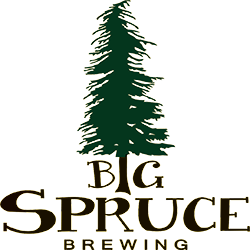Congrats! You are a part of the Big Spruce Heritage Seed project! In the summer of 2022 we began planting heritage seeds on our certified organic farm, with the intention of saving these magnificent heirloom seeds for others to enjoy. Below are helpful planting intructions for your bush bean, pole bean and fava bean seeds. Happy gardening!
Pole Bean Planting
Timing
Direct sow from late spring to early summer. Try to plant during a warm, dry spell. Soil must be warm – if it is not warm enough, seeds may rot, especially our untreated seeds. Optimal soil temperature: 21-32°C (70-90°F).
Starting
Seeds can be started indoors, or sowed directly. Set seeds 7-10cm (3-4″) apart and 3.5cm (1½”) deep at the base of a support. Plants will climb by twining around almost anything. Try rough poles, lumber, re-bar, or build a strong trellis 2-2.5m (6-8′) tall. Seeds will sprout in 8-16 days, depending on soil conditions.
Growing
Ideal pH: 6.0-6.5. Well drained, warm soil in full sun is best. Use 1 cup of balanced organic fertilizer for every 3m (10′) of row. Too much nitrogen in fertilizer or manure is often the cause of poor pod set and delayed maturity. If beans flower but do not set pods, the cause can be zinc deficiency. Try spraying the plants with kelp based fertilizer. Wet leaves on crowded plants are subject to diseases. Thin plants to increase air circulation and avoid touching the leaves while they are wet.
Harvest
Because pole beans are always climbing, there are always beans at different stages of maturity. It is important to keep picking regularly so the plant does not fully mature seeds and stop producing new pods. If pods get fat with seed, the plant will stop flowering. The smaller the bean, the more tender they are.
Bush Bean Planting
Timing
Direct sow from mid-spring to early summer. Try to plant during a warm, dry spell. Soil must be warm – if it is not warm enough, the seeds may rot, especially our untreated seeds. Optimal soil temperature for germination: 21-32°C (70-90°F). The seeds should sprout in 8-16 days, depending on conditions.
Starting
Sow seeds 2-5cm (1-2″) deep, 5-8cm (2-3″) apart, in rows 45-60cm (18-24″) apart. Thin to at least 15cm (6″) apart in each row. If the weather is too wet, beans can also be started in pots indoors and set out carefully a few weeks later. For a continuous harvest, plant at 3 week intervals.
Days to Maturity
From direct sowing.
Growing
Ideal pH: 6.0-6.5. Well drained, warm soil in full sun is best. Raised beds help with both drainage and warmth. Use 1 cup of complete organic fertilizer for every 3m (10′) of row. Too much nitrogen fertilizer is often the cause of poor pod set and delayed maturity. If the plants flower but do not set pods, the cause may be zinc deficiency. Try spraying the plants with kelp-based fertilizer. Wet leaves on crowded plants are subject to diseases. Thin plants to increase air circulation and avoid touching the leaves while they are wet.
Harvest
Pick beans regularly to keep the plant producing (if pods get fat with seed, the plant will stop flowering). The smaller the bean, the more tender they are.
Seed Info
In optimal conditions a tleast 75% of seeds should germinate. Usual seed life: 3 years. Per 100′ row: 800 seeds. Per acre: 232M seeds.
Diseases & Pests
Aphids – A hard stream of water can be used to remove aphids from plants. Wash off with water early in the day. Check for natural enemies such as grey-brown or bloated, parasitized aphids and the presence of larvae of lady beetles and lacewings.
Spider mites (two-spotted) – Wash off with water early in the day. A hard stream of water can be used to remove mites.
Leafhoppers – Small, light green to grey insects that feed on the plant juices, causing stunted growth, and transferring viruses. No cultural control available.
Companion Planting
Beans fix nitrogen in the soil. Plant with beets, Brassicas, carrots, celery, chard, corn, cucumber, eggplant, peas, potatoes, radish, and strawberries. Avoid planting near chives, garlic, leeks, and onions.
Fava Bean Planting
Difficulty: Easy. Only recommended for larger containers.
Timing: sow October/November in mild winter areas. Sow February to May in other areas. Tall soft plants won’t withstand winter well.
Sowing: Set seed 5-10cm (2-4”) deep, 15cm (6”) apart in double rows 23cm (9”) apart. Each set of double rows should be 1m (3’) apart.
Soil: Enrich the soil with compost. Use a broad bean inoculant to provide a source of nitrogen. Aim for a slightly acid soil with a pH of 6.0-6.8.
Growing: Keep overwintered plants weeded. Provide stakes or strings between the rows to stop plants from falling over. When black aphids appear in May/June, pinch off the growing tips on which the aphids feed. Spray with blasts of water to dislodge the aphids.
Harvest: Pick when the pods begin to droop from the weight of the seeds. Shell (like peas) and cook or use in soup. For dried beans, wait until the pots start to shrivel. Note: some people are highly allergic to broad beans (and broad bean pollen). This condition, known as favism, can cause muscle weakness, paralysis, and even death. Favism is an inherited disorder.
Storage: Refrigerated in relatively high humidity, unshelled broad beans have a shelf life of 1-2 weeks.
Seed info: In optimum conditions at least 80% of seeds will germinate. Usual seed life: 2-3 years.
Growing for seed: Isolate each variety by 2km (1 mile) — traditional 300m advice is now thought to be insufficient.
Pests & Disease: Relatively trouble free. Practice crop rotation and keep garden free from debris.

